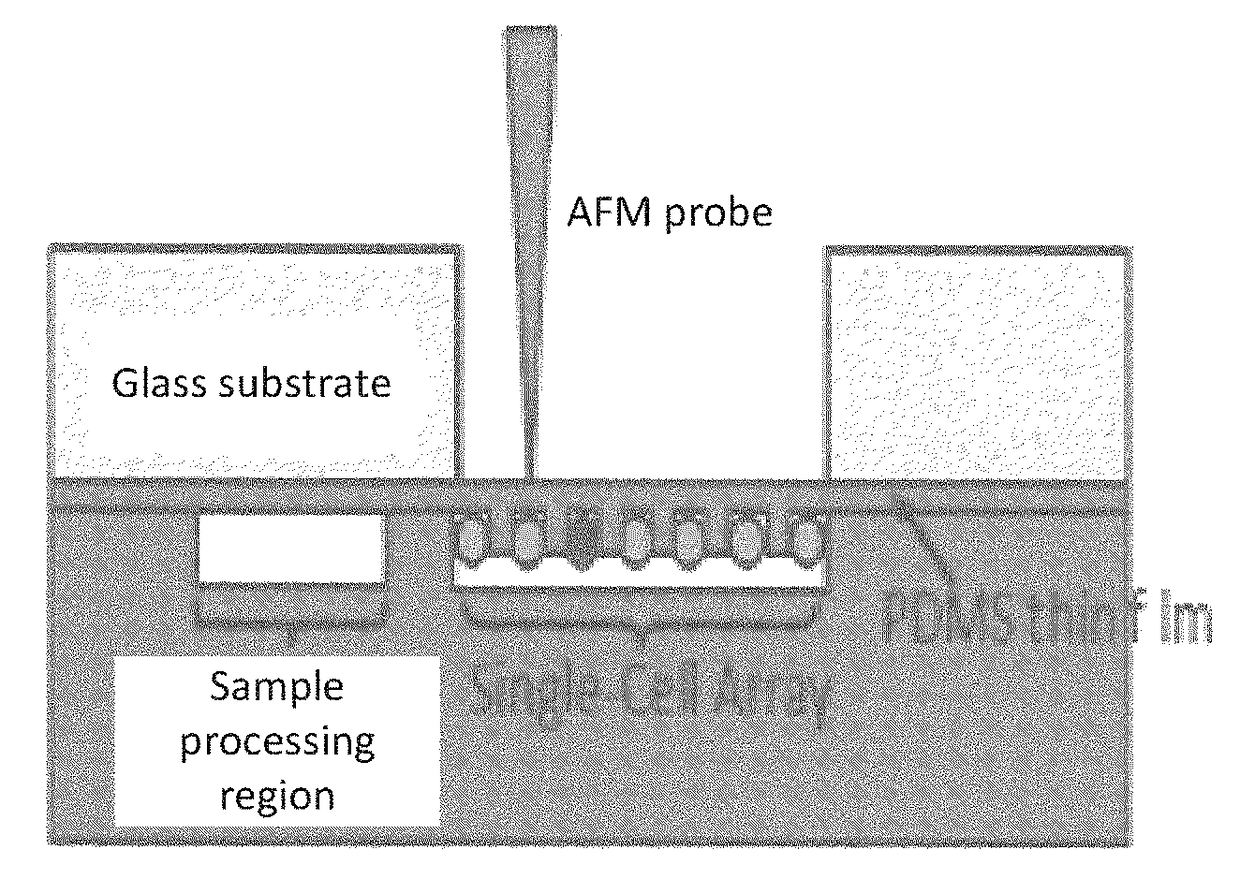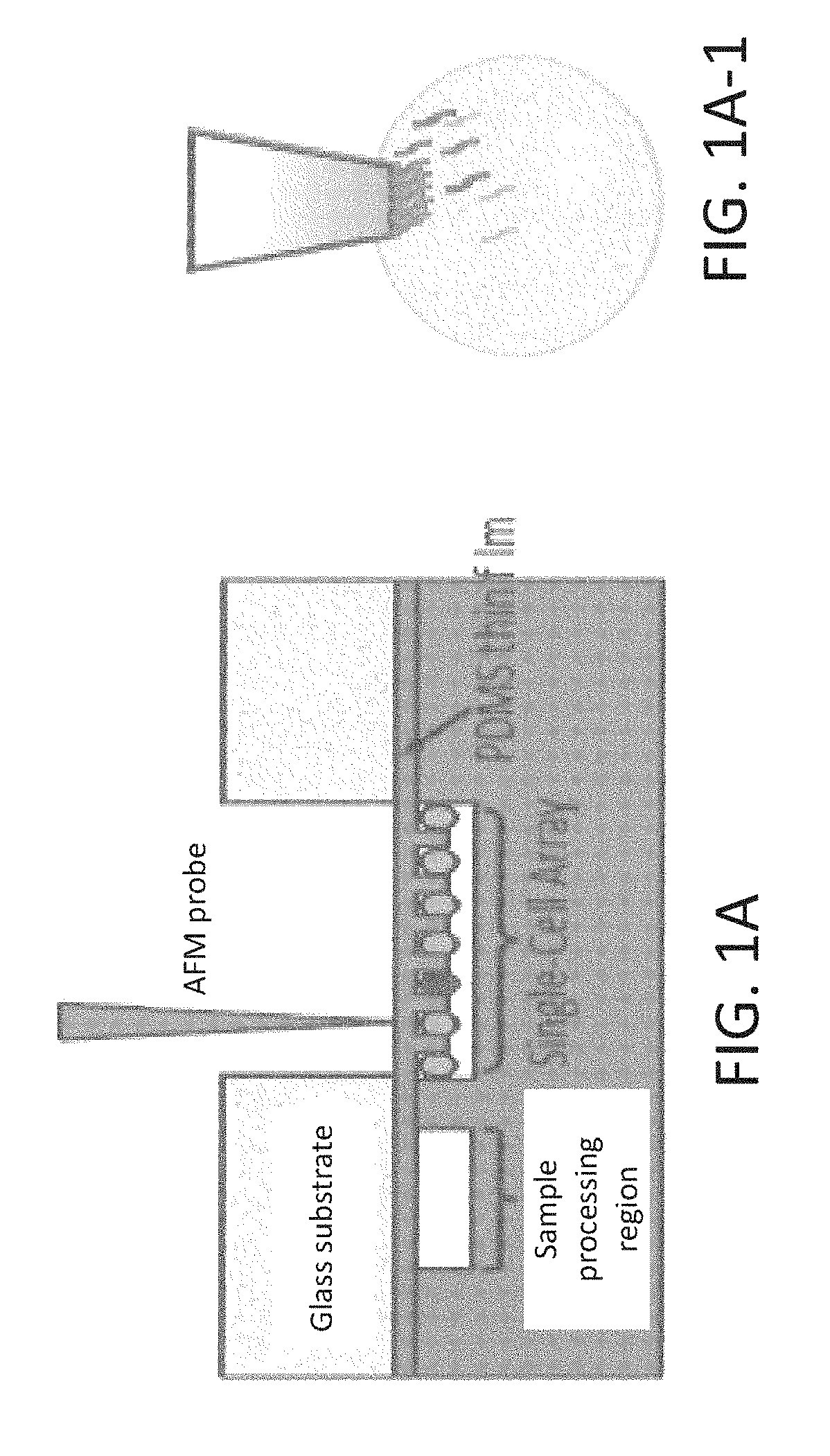INTEGRATED MICROFLUIDIC PLATFORM FOR SELECTIVE EXTRACTION OF SINGLE-CELL mRNA
a microfluidic platform and selective extraction technology, applied in the field of integrated microfluidic platforms for selective extraction of single-cell mrna, can solve the problems of cell lysis, accidental evaporation of media, cell destruction, etc., and achieve the effect of facilitating single-cell transcriptomic analysis
- Summary
- Abstract
- Description
- Claims
- Application Information
AI Technical Summary
Benefits of technology
Problems solved by technology
Method used
Image
Examples
Embodiment Construction
[0037]Various embodiments disclosed herein comprise a microfluidic lab-on-a-chip platform for high throughput single-cell trapping, integrated with a modified AFM probing system for the extraction of intracellular molecules (e.g. mRNAs, proteins, small molecules) from an individual living cell. The overall schematic design of an embodiment of a microfluidic lab-on-a-chip platform is illustrated in FIG. 1A. FIG. 1B illustrates a perspective view of an embodiment of an integrated microfluidic device comprising a single cell trapping array encapsulated by a PDMS membrane and a DENT configured to penetrate through the PDMS membrane. Some of the features of the various embodiments disclosed herein are listed as below:
[0038]The single-cell trapping array sealed with an ultra-thin PDMS membrane facilitates an external micro-manipulating instrument (e.g. AFM probes, micro-injectors, DENT) to penetrate through the membrane and access a trapped single cell for probing of mRNA expression level...
PUM
| Property | Measurement | Unit |
|---|---|---|
| thickness | aaaaa | aaaaa |
| frequency | aaaaa | aaaaa |
| thickness | aaaaa | aaaaa |
Abstract
Description
Claims
Application Information
 Login to View More
Login to View More - R&D
- Intellectual Property
- Life Sciences
- Materials
- Tech Scout
- Unparalleled Data Quality
- Higher Quality Content
- 60% Fewer Hallucinations
Browse by: Latest US Patents, China's latest patents, Technical Efficacy Thesaurus, Application Domain, Technology Topic, Popular Technical Reports.
© 2025 PatSnap. All rights reserved.Legal|Privacy policy|Modern Slavery Act Transparency Statement|Sitemap|About US| Contact US: help@patsnap.com



